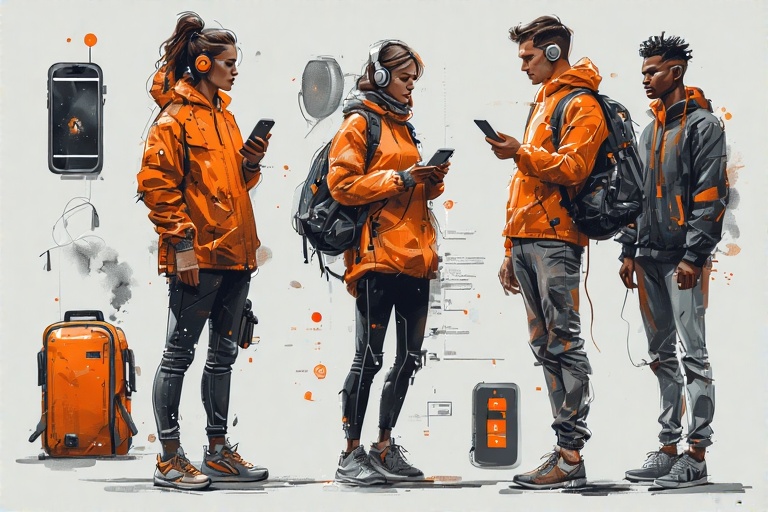In just a few years, AI-generated avatars, voice clones and deepfake videos have moved from laboratory curiosities to everyday realities. Advances in generative adversarial networks, diffusion models and text-to-speech engines let anyone spin up a photorealistic face, mimic a celebrity’s voice or create a video of events that never happened. While these tools unlock powerful new creative possibilities, they also upend our assumptions about authenticity—making it ever harder to tell genuine content from elaborate fakes.
1. Technologies Driving the Surge
Several breakthroughs have fueled the explosion of synthetic media:
- High-Fidelity Avatars: Real-time capture systems and neural rendering stitch together facial expressions, eye movements and gestures into lifelike digital doubles.
- Voice Cloning: Modern text-to-speech engines can replicate vocal timbre, accent and intonation from just a minute of audio input.
- Deepfake Video: Generative adversarial networks (GANs) and diffusion pipelines produce seamless face swaps and scene edits, complete with matching lighting and shadows.
- Multimodal Synthesis: Combining language models with video-generation tools lets you script an entire scene—dialogue, actions and visual style—from a simple text prompt.
- Mass Production: Cloud-based APIs and open-source libraries democratize access, letting small teams and individuals create thousands of synthetic clips at minimal cost.
2. Real-World Examples of Synthetic Content
Let me show you some examples of how synthetic media is already woven into our feeds:
- Virtual Influencers: Characters like Lil Miquela post branded content on Instagram, amassing millions of followers without ever stepping in front of a real camera.
- AI Anchors: News sites deploy generated presenters that speak in multiple languages, delivering templated bulletins without human voice-overs.
- Voice-Phishing Scams: Fraudsters use cloned corporate voices to call customers, tricking them into revealing passwords or authorizing fund transfers.
- Dynamic Training Videos: Corporations swap in local managers’ faces and voices on orientation modules, reducing production time and cost.
- Political Deepfakes: Manipulated clips of public figures making inflammatory remarks have swirled on social platforms, undermining trust weeks before elections.
3. Impacts on Trust and Misinformation
The proliferation of synthetic media carries serious implications:
- The “Liar’s Dividend”: As deepfakes grow harder to spot, real footage can be dismissed as “just another fake,” muddying accountability.
- Erosion of News Credibility: Viral AI-generated clips can spread faster than corrections, leaving audiences confused about what’s factual.
- Targeted Manipulation: By combining personalized avatars and voice messages, bad actors can tailor disinformation at individual or community levels.
- Legal and Ethical Risks: Unauthorized use of someone’s likeness or voice violates privacy rights and can end in costly lawsuits or regulatory fines.
- Social Polarization: Synthetic testimonials and grassroots-style videos can amplify fringe views, deepening divides and fueling online conflict.
4. A Layered Defense Framework
Defending against AI-powered misinformation requires multiple strategies:
- Provenance Tracking: Embed cryptographic watermarks or attestations in original media so any tampering breaks the chain of authenticity.
- Automated Detection: Deploy AI forensics tools that flag pixel-level anomalies, audio artifacts or prompt-derived patterns in suspect files.
- Human Review: Combine machine flags with expert analysts who can assess context, motives and potential harm before content goes live.
- Policy & Governance: Enforce clear guidelines on deepfake creation and distribution—requiring disclosure tags on all synthetic assets.
- Media Literacy: Educate audiences on the existence and hallmarks of synthetic media, encouraging critical viewing and source verification.
5. Building Awareness and Resilience
Let me show you some examples of practical steps organizations are taking:
- Newsrooms add “AI-Generated” banners on computer-read segments and require editorial sign-off before airing avatar-anchored reports.
- Financial institutions train staff to verify caller identity through multi-factor checks rather than voice alone, thwarting cloned-voice scams.
- Social platforms experiment with “trusted badges” for verified accounts and roll out one-click fact-checks for user-reported deepfakes.
- Government agencies partner with tech firms on red-team exercises, stress-testing detection pipelines and response playbooks.
- Civil-society groups run public campaigns demonstrating how to spot AI artifacts—blink patterns, mouth geometry or lip-sync issues.
6. Looking Ahead: Ethical and Technical Frontiers
As synthetic media tools evolve, so too must our defenses and norms:
- Standardized Watermarking: Industry-wide adoption of indelible digital seals will help audiences verify a clip’s origin at a glance.
- Explainable AI: Detection systems should not only flag fakes but also surface human-readable reasons—lighting mismatches or voice-print errors.
- Regulatory Frameworks: Laws requiring overt labeling of synthetic content and outlining liability for malicious uses will drive compliance.
- Ethical Tool Design: Generative-AI developers must bake in safety—guardrails that prevent unauthorized likeness use or political deepfake creation.
- Global Collaboration: Cross-border partnerships among platforms, policymakers and research labs will keep pace with threat actors’ innovation.
AI-generated avatars, voices and videos are reshaping how we create and consume media. To preserve trust in our digital information ecosystem, we must pair these innovations with robust provenance checks, advanced detection tools and a culture of transparency. Only by thinking several moves ahead can we ensure that synthetic media enriches creativity, without giving bad actors the upper hand in the battle for truth.







Add a Comment